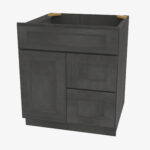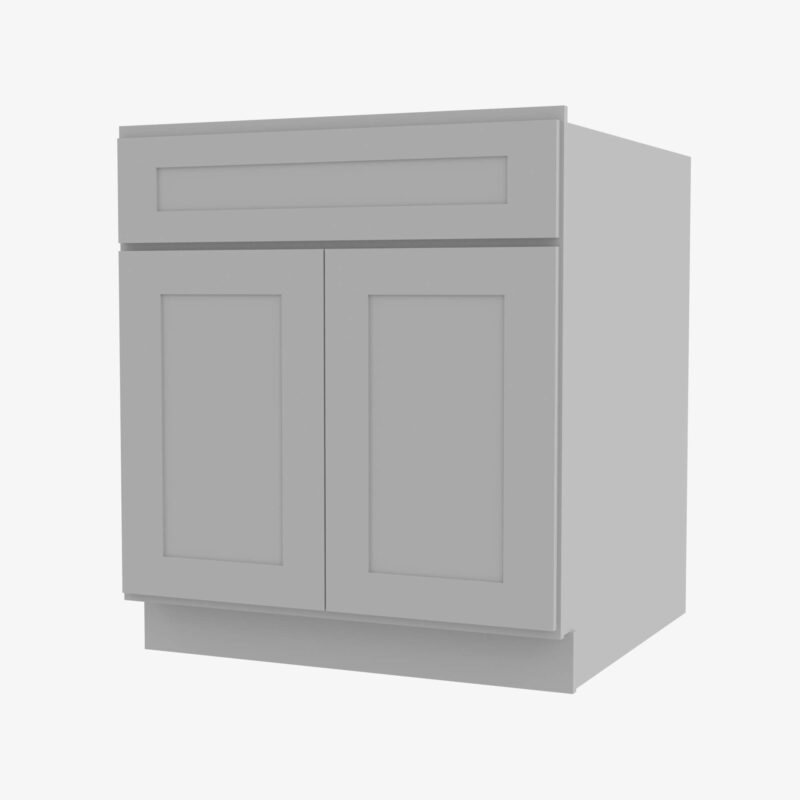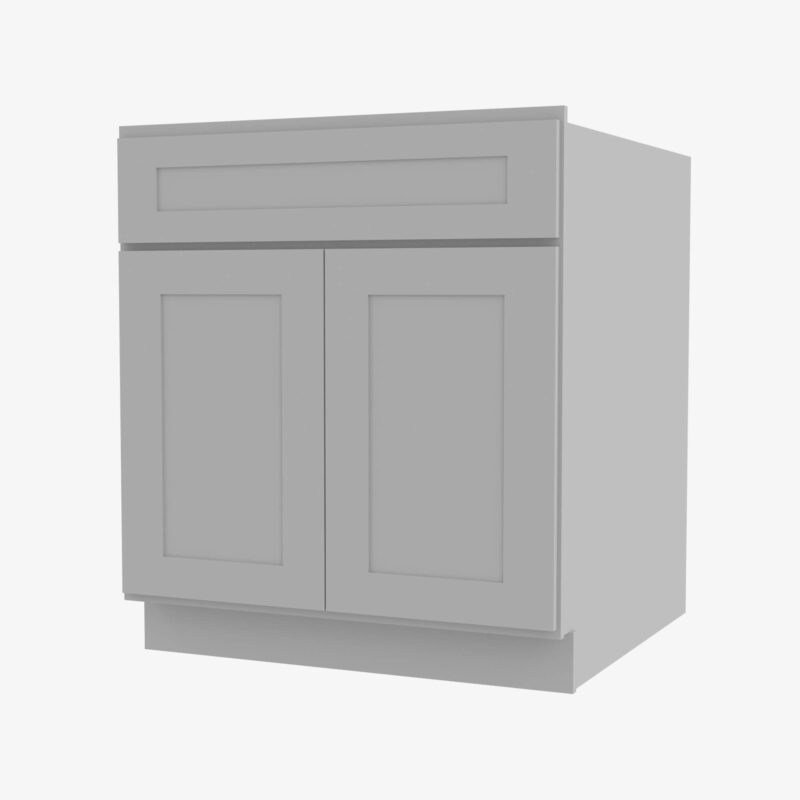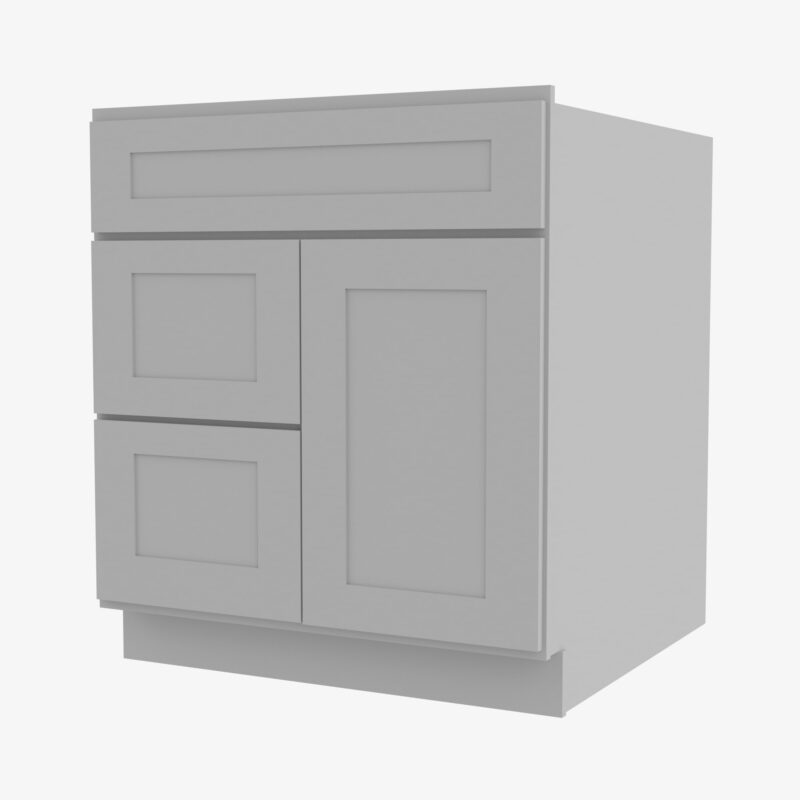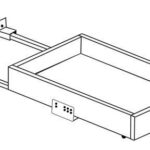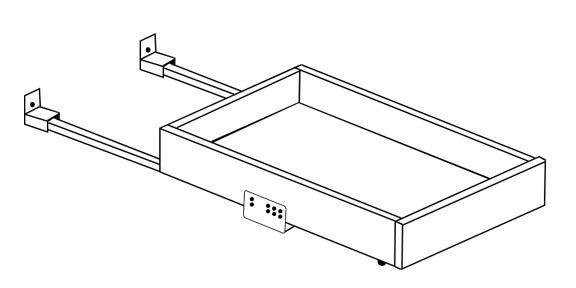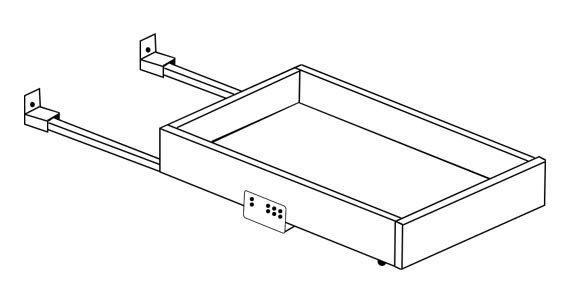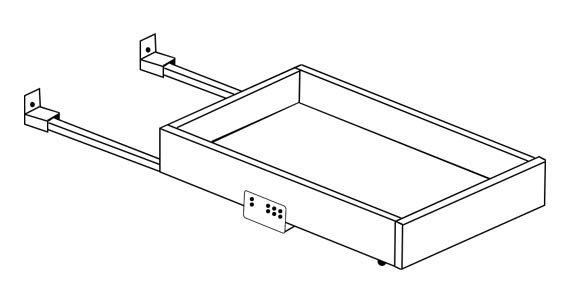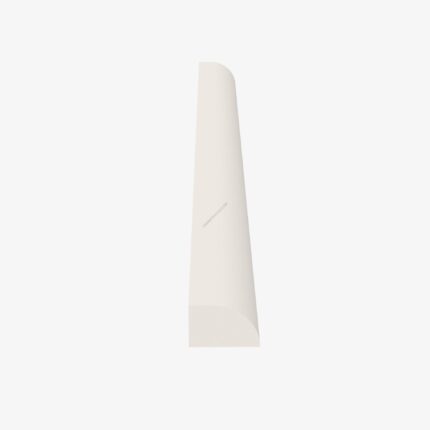When it comes to interior design, it’s often the smallest details that leave the most lasting impression. Corner moldings are one of those subtle yet essential elements that can elevate the entire aesthetic of your space. While they may seem like an afterthought, corner moldings play a significant role in enhancing the beauty and functionality of a room. Whether you’re remodeling your home or simply updating a room, corner moldings provide the finishing touch that ties everything together.
What Are Corner Moldings?
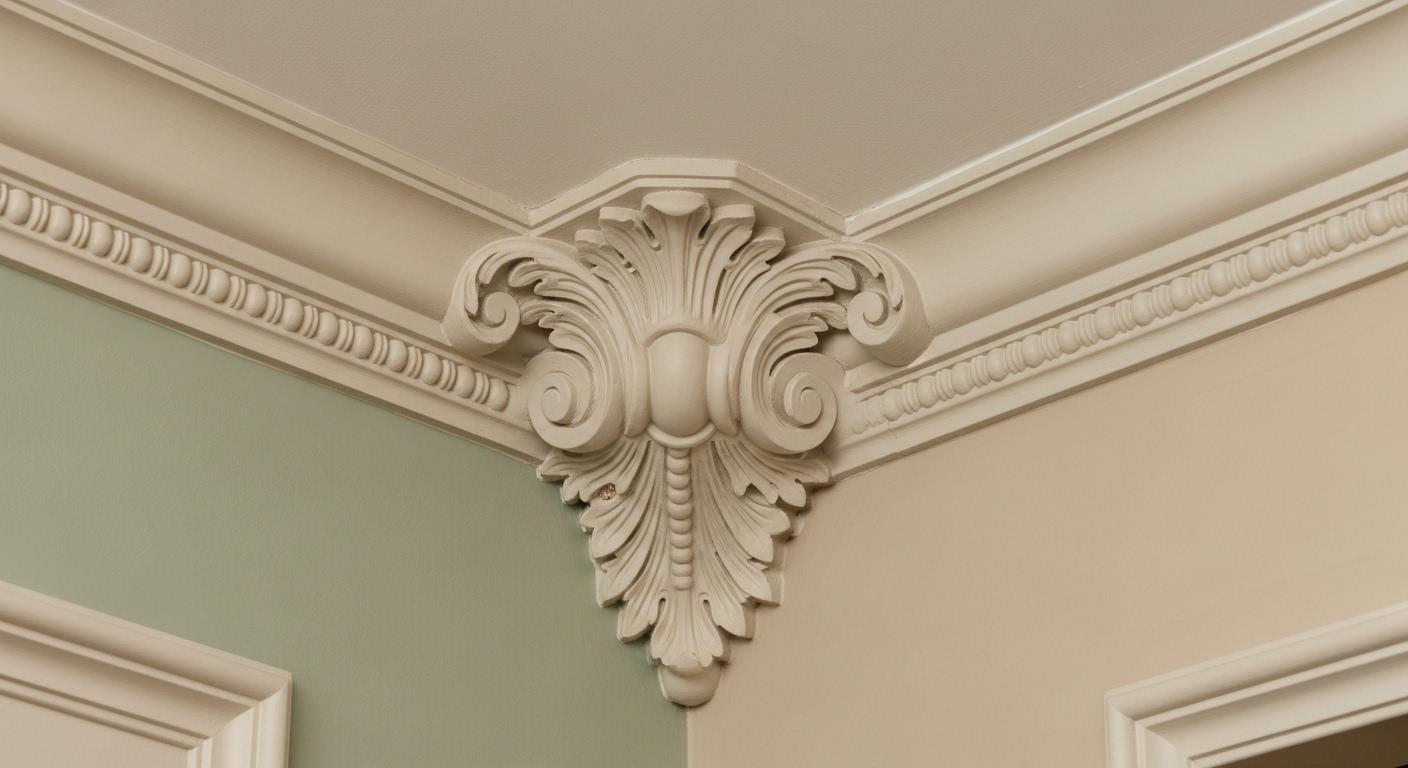
Corner moldings are decorative trim pieces used to cover the seams where two walls meet, typically at a right angle. These moldings are crafted to add elegance and style to corners, where traditional joints might look rough or unfinished. They’re available in a variety of shapes, sizes, and materials, making them versatile enough to complement any style—from traditional and classic to modern and minimalist.
Not only do corner moldings provide a neat, polished look, but they also serve a practical purpose. They can cover imperfections in the walls, protect corners from damage, and add structural integrity to the walls. The right corner molding can make a room feel complete, creating smooth transitions between different surfaces and adding a sense of continuity.
The Importance of Corner Moldings in Interior Design
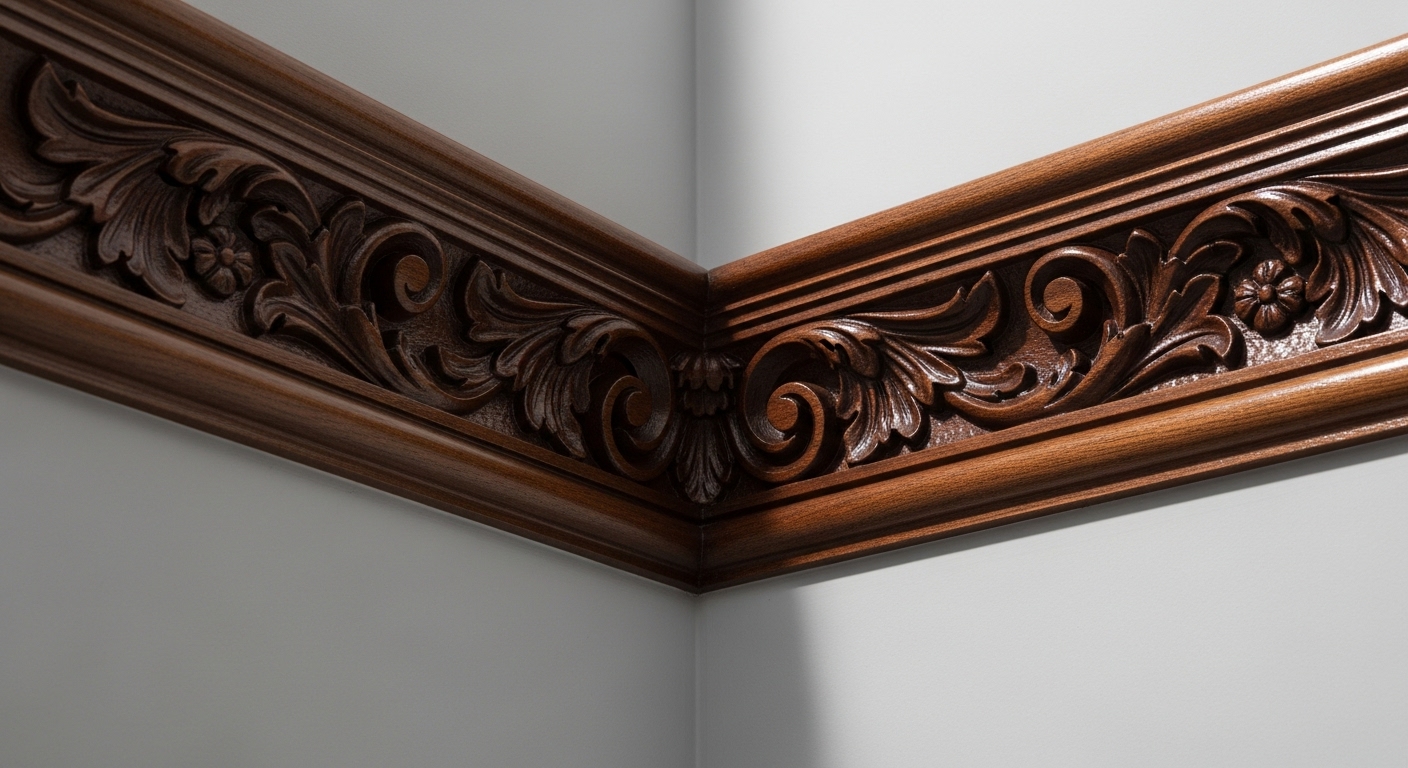
-
Aesthetic Appeal
Just as a frame enhances the beauty of a painting, corner moldings enhance the beauty of a room. They add architectural detail that can transform plain walls into something visually interesting. Whether you opt for a simple, sleek design or an intricate, ornate style, moldings can complement the overall theme of your room, giving it depth and character.
-
Hiding Imperfections
We’ve all seen those little imperfections that come with construction—uneven drywall, small gaps between the wall and ceiling, or cracks along the edges of the room. Corner moldings are the perfect solution for these issues, covering up imperfections with ease. They create a seamless transition between surfaces, hiding the gaps and cracks that would otherwise be noticeable.
-
Protecting Corners
Corners are often the most vulnerable areas in a room, susceptible to damage from furniture, foot traffic, or general wear and tear. Corner moldings act as a protective barrier, absorbing the impact and keeping your walls and corners looking fresh for years. This makes them an essential feature for homes with high traffic or young children.
-
Versatility in Design
One of the best things about corner moldings is their versatility. You can choose from a wide variety of materials such as wood, polyurethane, MDF, or even foam, allowing you to match the moldings with your existing decor. Whether your home is traditional, contemporary, or rustic, there’s a molding style to suit every taste.
Types of Corner Moldings
While all corner moldings serve a similar purpose, the style and material can vary significantly. Here’s a look at the most popular types of corner moldings you’ll encounter.
-
Inside Corner Moldings
These moldings are designed to fit into the inner corner where two walls meet. They typically feature a sharp, angular design that creates a clean, modern look. Inside corner moldings are ideal for creating sharp, defined lines and enhancing the clean-cut aesthetics of a room.
-
Outside Corner Moldings
Outside corner moldings are used on the exterior corners of rooms or architectural elements like columns or built-in shelves. They have a more rounded or curved design, creating a soft, inviting look. These moldings help soften the transition between surfaces and protect the edges of your walls from damage.
-
Cove Moldings
For a more subtle, curved finish, cove moldings are an excellent choice. These moldings curve gently around the corner, offering a smooth transition between walls and ceilings. They’re particularly popular in traditional and contemporary designs, adding a touch of sophistication without being too ornate.
-
Quarter Round Moldings
Quarter round moldings are smaller, more rounded trims that can be used to create softer, more subtle corners. They are especially useful in spaces where you want to maintain a low profile while still adding that extra detail that makes a room feel complete.
-
Bullnose Moldings
Bullnose moldings feature rounded edges, giving corners a smooth, softened look. They’re commonly used in modern and minimalist designs, where clean lines and simple shapes are a key part of the overall aesthetic. Bullnose moldings are perfect for those who want to add subtle elegance to a room without overwhelming the space.
Materials for Corner Moldings
The material you choose for your corner moldings will influence not only their appearance but also their durability and functionality. Here are some of the most popular materials used in corner moldings:
-
Wood
Traditional and timeless, wooden corner moldings offer a natural look that complements a variety of interior styles. Whether you choose rich oak, sleek cherry, or classic pine, wooden moldings can bring warmth and charm to a room. They are highly durable and can be stained or painted to match your desired look.
-
Polyurethane
For a more lightweight and cost-effective option, polyurethane corner moldings are a great choice. These moldings are easy to install and come in a range of finishes, from smooth to textured. Polyurethane is also resistant to moisture, making it a durable option for areas like bathrooms or kitchens.
-
MDF (Medium Density Fiberboard)
MDF corner moldings are affordable and highly customizable. They can be painted easily, allowing you to match the moldings with any color scheme. MDF is ideal for those who want a budget-friendly option without compromising on quality.
-
Foam
If you’re looking for an easy-to-install, lightweight molding option, foam corner moldings are a great choice. These moldings are flexible and can be cut to fit any corner. Foam is also resistant to moisture and can be painted to achieve the desired look, making it perfect for bathrooms and other high-humidity areas.
Installing Corner Moldings: A Step-by-Step Guide
Installing corner moldings may seem like a daunting task, but with the right tools and techniques, it can be a relatively simple DIY project. Here’s how to install your corner moldings:
-
Measure and Cut
Begin by measuring the length of the corners where you plan to install the moldings. Using a miter saw, cut the moldings to fit, ensuring that the angles are precise.
-
Prep the Surface
Clean the wall or surface where the molding will be attached. Make sure the area is free of dust and debris to ensure proper adhesion.
-
Apply Adhesive or Nails
Apply construction adhesive to the back of the molding or use finishing nails to secure it to the wall. Be sure to press the molding firmly into place and wipe away any excess adhesive.
-
Caulk and Paint
Once the molding is installed, fill any gaps with caulk for a smooth, seamless finish. Then, paint or stain the molding to match the room’s decor.
Final Thoughts: The Beauty in the Details
While corner moldings may seem like a small detail, they have the power to completely transform the look of a room. They add architectural interest, cover imperfections, and protect vulnerable corners from damage. Whether you’re remodeling your home or simply updating a room, corner moldings are an essential addition that will elevate your space.
From classic wood moldings to modern polyurethane and foam options, the right corner molding can make your room feel polished, inviting, and complete. So, the next time you’re updating your space, don’t overlook the corners—after all, it’s the details that make a room feel truly finished.
 Refrigerator Cabinet and End Panel VW-REP2484(3) Forevermark Rio Vista White Shaker
Refrigerator Cabinet and End Panel VW-REP2484(3) Forevermark Rio Vista White Shaker
 Glass Door Kitchen Cabinet TG-W3030BMGD Forevermark Midtown Grey
Glass Door Kitchen Cabinet TG-W3030BMGD Forevermark Midtown Grey
 Oven Cabinet TQ-OM3396B Forevermark Townplace Crema
Oven Cabinet TQ-OM3396B Forevermark Townplace Crema
